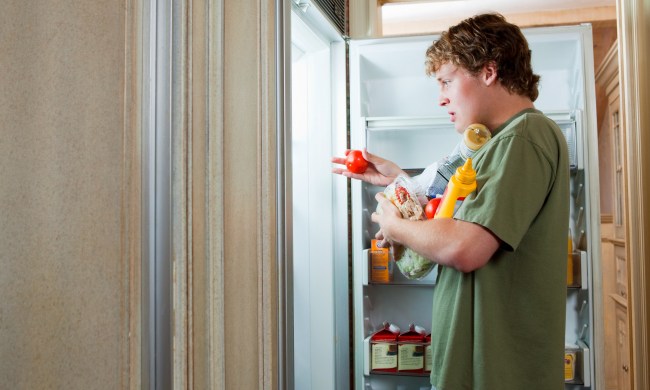Online therapy has actually been around for a lot longer than many think. Telemed visits and online therapy did exist before the coronavirus pandemic. Both services had already been in place, but the impact of the pandemic made more people aware of the virtual medical options available, especially relating to mental health. Online therapy for teens actually has a lot of perks. Teens spend a great deal of time online. They’re comfortable and savvy when it comes to online chatting. Online therapy also allows teens to meet with a therapist from the privacy of their own homes. Many teens are afraid of seeing a mental health professional or starting therapy because they don’t want friends or classmates to find out. If therapy is conducted online, that fear and anxiety go away.
A 2016 study of Australian teens showed 72 percent were willing to give online therapy a try if they required support. The study also cited how the use of online therapy expands the reach of mental health professionals. For many teens, online therapy is more convenient. It can also be less costly for parents. For online therapy to be successful though, both patient and medical professional must have a reliable internet connection.

What online therapy is out there?
There are several different options when it comes to online therapy for your teen. Video counseling is the most common and similar to a face-to-face therapy session. Online therapy can also be done through chats, messaging, or phone calls. Online therapy can be done on a variety of devices including laptops, computers, tablets, and smartphones.

Will my insurance cover online therapy?
While online therapy is typically less expensive than in-person, it’s important to find out whether your insurance company covers it. The coronavirus pandemic made telemed visits an important component of health care. As a result, more insurance companies are providing coverage for virtual medical services like online therapy. Insurance coverage for online therapy for your teen typically depends on your family’s insurance plan, the online therapy platform, and the regulations in the state where you live. Since mental health professionals are licensed in a particular state, your teen can only seek online therapy from someone within your state. Online therapy platforms like Talkspace provide a link for people to check to see what insurance providers they work with. In order to avoid unwanted costs, it’s important to talk directly with your health insurance provider. Calling your provider can answer questions about co-pays as well as which mental health professionals are in-network. Getting these questions answered before your teen begins online therapy is a vital step.

Online therapy options
Talkspace
This online therapy platform offers services for teens ages 13 to 17. It accepts major insurance providers like Cigna and is also an employee benefit for some companies. Patients without health insurance can still utilize the platform. Talkspace’s plans are based on subscriptions which can be billed each month, quarterly, or twice a year. Cost depends on where you reside as well as the availability of therapists in your area. Three types of plans are offered. Live therapy includes four 45-minute sessions but doesn’t include text, video, or audio messaging. Messaging therapy includes text, video, and audio messaging. The third option is a combination of live therapy and messaging.
BetterHelp
One of the biggest therapy platforms online is BetterHelp. It does offer therapy for teens. BetterHelp doesn’t accept insurance, but patients can try and submit a claim to their insurance company if they receive a diagnosis from a doctor. Costs range from $60 to $90 per week and is based on location, therapy preference, and availability of therapists in your area. Therapy options include video, phone, online chatting, and messaging.
MDLIVE
MDLIVE is an online telemed service that also offers online therapy for teens. Through these platforms, teens can talk with a therapist or psychiatrist online or over the phone. Once you create an account, you will be able to determine if therapy or psychiatric care is best for your teen. MDLIVE does take most insurance plans, but it’s still important to check with your provider before creating an account. Therapy sessions can run up to $108 with psychiatric treatment costing up to $284 depending on your insurance plan.
Teencounseling
A division of BetterHelp, Teencounseling is an online therapy platform focusing solely on teens ages 13 to 19. The site offers options for parents and teens to see if the site is a good fit. Online therapy options include messaging, live chats, phone calls, and video conferencing. Like its parent company BetterHelp, Teencounseling doesn’t accept insurance. Costs range from $60 to $90 per week and are billed monthly.
7 Cups
Sometimes teens just need someone to listen. If that’s the case, 7 Cups offers a forum where teens can chat with a trained volunteer listener for free. Listeners are not therapists though. The site does offer online therapy for teens with a licensed therapist for $150 a month.
Online therapy is not new. It has been around for a while but became more widespread because of the coronavirus pandemic. When it comes to teens, online therapy can be a forum where they feel safe talking to a therapist. Teens are comfortable online and tend to favor the privacy virtual therapy offers. As online therapy expands, more insurance companies are offering coverage, but always check with your provider first before using a virtual platform. The five we’ve outlined here offer online therapy options for teens.



